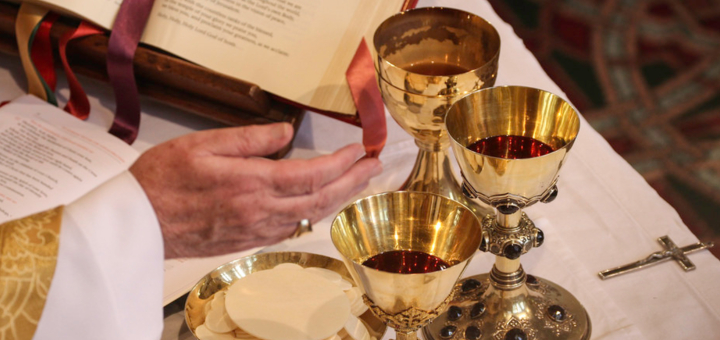
 Photo by Fr. Lawrence Lew, OP (2014) via Flickr, CC BY NC-ND 2.0[/caption]
Have you ever read about or studied the Mass? If we did, we would see that not much has changed. I have always found its history, especially its roots, very fascinating.
Photo by Fr. Lawrence Lew, OP (2014) via Flickr, CC BY NC-ND 2.0[/caption]
Have you ever read about or studied the Mass? If we did, we would see that not much has changed. I have always found its history, especially its roots, very fascinating.
I recently read a book written by Mike Aquilina, titled The Mass of the Early Christians. In it he takes us through the development of the Mass from apostolic times through approximately the fourth century. He devotes most of the book to the writings of the Church Fathers on the Eucharist. The Church Fathers gave a glimpse as to how the early Christians celebrated the Mass.
I found it incredible that even though Christianity was widely dispersed by that time, the celebration of the Mass was fairly “standardized” (dare I say catholic?). It would have been so easy for all those local churches to have developed their own style. But the core presentation of the Mass was the same everywhere.
The Church had already developed the dogma of the True Presence. Reverence for the Body and Blood of Christ was paramount. The priests would faithfully say the words of consecration. The accompanying Eucharistic Prayers were already very elaborate.
Phrases such as, “The Lord be with you,” and “And with your spirit,” were around back then. Though we do not give a “kiss of peace,” we offer a sign of peace. We also “lift up our hearts,” as did our early Christian forefathers. From the beginning we have had bishops, priests, and deacons. Their roles during the Mass and within the faith community has not changed.
From the two chapters that discuss the Liturgy of St. James and the writings of St. Cyril of Jerusalem, we would recognize immediately much of the liturgy and the theology. The Liturgy gives a clear breakdown of how the Mass was being celebrated in Jerusalem and Antioch by the fourth century. Aquilina said that the liturgy used today by the Byzantine Rite Catholics and some Orthodox churches (the liturgy of St John Chrysostom) is based upon the Liturgy of St. James.
Saint Cyril discussed the Real Presence. Aquilina also included a liturgy guide written by Cyril. Within that guide Cyril wrote a commentary on the Lord’s Prayer which sounds very "modern."
Based upon the writings of the Church Fathers, as synthesized by Aquilina, we know full well that our celebration of the Mass, and the way we celebrate, is as ancient as Christianity itself. It is nice for us to compare how Mass was celebrated in the early centuries of the Church to the present day. But we should not become nostalgic about it.
Apostolic and organizational tradition are part of the make-up of our faith. But it is important that we continue to move the faith forward, keeping the core and significance of the Mass at the center of our worship, knowing that how we worship has been so for over two millennia.
The Mass and the theology surrounding it became very sophisticated in a relatively short amount of time. I can only think that it has been the work of the Holy Spirit who inspired the Apostles down to the Church Fathers in helping create the Mass to what was and is to this day.
I encourage you to read either Mike Aquilina’s book or any good book dealing with the history of the Mass. You will be amazed, as I was, at how much we share in our worship with our brothers and sisters in faith from past times. I think also that you will gain a greater appreciation for the Mass.
Copyright 2018 Michael T Carrillo
About the Author
Michael T Carrillo
Michael Carrillo is a retired police officer from a large California metropolitan police department. He is married to Vicki and they have five adult children between them. He is an unabashed fan of Jesuit education, though he regrets not obtaining one himself. Day hikes and walks give him opportunities and inspirations to look for and find God.


.png?width=1806&height=731&name=CatholicMom_hcfm_logo1_pos_871c_2728c%20(002).png)
Comments